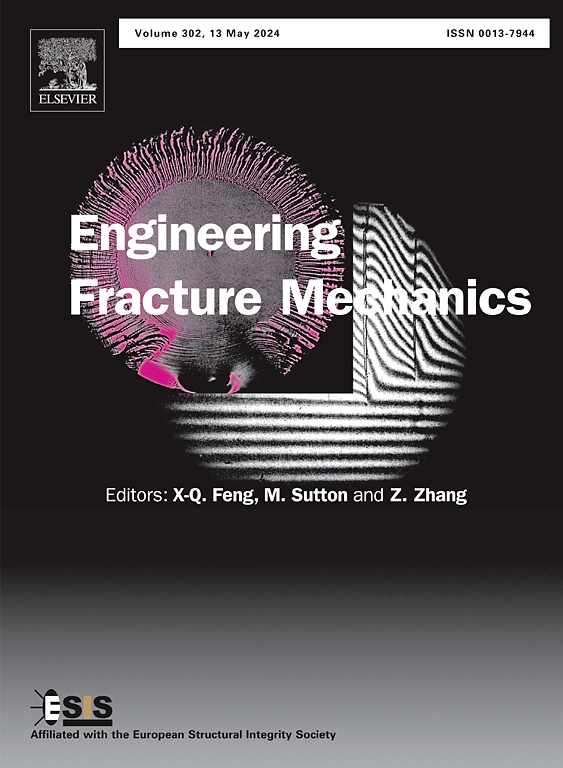Effect of welding residual stress on hydrogen-induced fracture and fatigue life of X80 pipeline girth welded joints
IF 4.7
2区 工程技术
Q1 MECHANICS
引用次数: 0
Abstract
In this work, elastic–plastic fracture toughness tests were conducted on X80 base metal (BM), weld metal (WM), and heat affected zone (HAZ) under 12 MPa total pressure with 10 vol% and 30 vol% hydrogen-blended environments. Experimental results revealed that as the hydrogen blending ratio increased from 10 vol% to 30 vol%, the hydrogen-induced fracture toughness KIH values of the BM, WM, and HAZ decreased by 14.6 %, 17.3 %, and 21.4 %, respectively. Within the investigated parameter range, both WM and HAZ exhibited higher hydrogen-induced crack propagation resistance than the BM under identical environments. Based on experimental results, a finite element framework was established to analyze cross-region fatigue crack growth in welded joints under residual stress. Numerical simulations revealed that in 30 vol% hydrogen environments coupled with welding residual stress, the equivalent stress intensity factor Keq at the crack tip in the weld zone exceeds the KIH at 45 % of the wall thickness, posing a fracture risk to the welded joint. Moreover, post-weld heat treatment (PWHT) significantly improves the stress state of welded joints. When the PWHT temperature exceeds 500℃, fatigue cracks maintain stable propagation until reaching 80 % of the wall thickness, with Keq consistently remaining below KIH throughout the crack growth process.
焊接残余应力对X80管道环焊缝氢致断裂及疲劳寿命的影响
在12 MPa总压、10 vol%和30 vol%的氢混合环境下,对X80母材(BM)、焊缝金属(WM)和热影响区(HAZ)进行了弹塑性断裂韧性试验。实验结果表明,当掺氢比从10 vol%增加到30 vol%时,BM、WM和HAZ的氢致断裂韧性KIH值分别降低14.6 %、17.3 %和21.4 %。在研究的参数范围内,在相同的环境下,WM和HAZ均表现出比BM更高的抗氢致裂纹扩展能力。在试验结果的基础上,建立了分析残余应力作用下焊接接头跨区域疲劳裂纹扩展的有限元框架。数值模拟结果表明,在30% vol%的氢气环境中,再加上焊接残余应力,焊缝区裂纹尖端的等效应力强度因子Keq超过了45 %壁厚处的等效应力强度因子KIH,存在焊接接头断裂的风险。此外,焊后热处理(PWHT)显著改善焊接接头的应力状态。当PWHT温度超过500℃时,疲劳裂纹保持稳定扩展,直至达到80 %壁厚,裂纹扩展过程中Keq始终保持在KIH以下。
本文章由计算机程序翻译,如有差异,请以英文原文为准。
求助全文
约1分钟内获得全文
求助全文
来源期刊
CiteScore
8.70
自引率
13.00%
发文量
606
审稿时长
74 days
期刊介绍:
EFM covers a broad range of topics in fracture mechanics to be of interest and use to both researchers and practitioners. Contributions are welcome which address the fracture behavior of conventional engineering material systems as well as newly emerging material systems. Contributions on developments in the areas of mechanics and materials science strongly related to fracture mechanics are also welcome. Papers on fatigue are welcome if they treat the fatigue process using the methods of fracture mechanics.

 求助内容:
求助内容: 应助结果提醒方式:
应助结果提醒方式:


